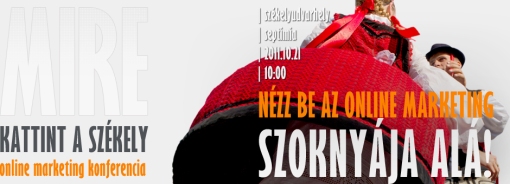an interesting article about: internet, social network, political campaign…you find the full article here E.B. Boyd and Austin Carr
“In an instant, social, online world, politicians need a plan that involves more than massive traditional media buys. Here’s how the savviest public servants found their way into the office. If 2008 marked the year that politics woke up to the power of online organizing, 2010 was the year that campaigns realized just how much support and money you could raise on the web. And yet, as odd as it might sound, consultants tell Fast Company that some candidates still prefer to throw their money at TV. To those candidates—and all candidates—we familiar with the way media works in the online, social world offer this, your new field guide.
Don’t mistake popularity on the social nets for likely success at the polls.
Some candidates asked their social media strategists to get them a certain number of fans on Facebook. But more fans doesn’t necessarily translate into more votes, especially if significant chunk of your fans live outside your district. Tea Party challenger Sharron Angle had significantly more Facebook and Twitter followers than veteran Senate majority leader Harry Reid, but Reid still prevailed at the polls. Many of Angle’s supporters were likely from outside Nevada, so they couldn’t actually vote for her.
Do mine those national followers for support.
….
And follow your voters.
Don’t limit your online ad spending only to your geographical region. If your voters regularly travel outside of that area, follow them to where they are. Robert Dold ran for Illinois’ 10th congressional seat, which is a bedroom community. Many residents work in Chicago. So Dold ran ads in Chicago during the workday to reach voters who might be surfing the web at work, in addition to the ads he ran in his own district night and day.
Look beyond traditional polls to see which way the wind is blowing.
….
Use Facebook to test your message(s).
There’s nothing wrong with doing old-fashioned focus-group testing, but the fact is that, other than in the Senate and Governor races, most candidates can’t afford to do extensive focus-group testing to determine which message will resonate best with their voters. Facebook, however, gives you a built-in panel. Select your parameters (women in Sheboygan between the ages of 35-42, for example). Drop a few different versions of an ad in front of them, and you’ll quickly see which messages and images get better results.
Don’t skimp on your AdWords buyer.
…
Use the cloud for organizing.
A number of consultants told Fast Company about the power of Google Forms for turning interested volunteers into live bodies on the ground. In the old world, when you put out a call for volunteers, people would call or email into the campaign. A staffer would manually collect those names and then break them down into lists for regional offices to follow-up with. Valuable time was lost doing the manual work. With Google Forms, however, you can place an online ad calling for help, then direct respondents to enter their information into the online form, which all regional offices can access directly and immediately get on the horn to grab the volunteers while they’re hot.
Beware the new dirty tricks.
The extreme precision with which you can target ads on Google and Facebook has created new opportunities for political pranksters. One consultant, who wished to remain anonymous for obvious reasons, told Fast Company how some campaigns had created ads designed to appear only in front of journalists, either by geo-targeting press centers or by targeting them on Facebook to users who identified themselves as employees of top news organizations. The goal of such a campaign is to get reporters chasing a story and ultimately to bog down the opposition. The consultant said tricks like that probably won’t work going forward, as the press becomes savvier. But new technologies will create new opportunities, which will in turn generate new tricks.
Beware of demon sheep: the dangers of viral votes.
Every candidate this election cycle relied on YouTube to spread their message, and many realized that what works on TV isn’t going to rack up views on the intertubes. The key to success? Going viral. In 2012, campaigns must be more careful than ever of the negative, unintended consequences of virality. Sure, it was great to see candidates riffing on pop-culture (see: Old Spice guy), but others weren’t necessarily aware of might become Internet meme fodder. Take Christine O’Donnell’s now-infamous “I’m not a witch” ad, or Dale Peterson’s rough-talking, gun-toting ad for Alabama Agriculture Commissioner, or Carly Fiorina’s bizarre “demon sheep” ad: All three videos went viral, and, perhaps unsurprisingly, all three candidates lost.
Stay engaged on social media after the election’s over.
Don’t let Facebook and Twitter go dark after Election Day. Use them to stay involved with your supporters and keep them enthusiastic about what you’re doing—so that they’ll be there for you the next time around. One veteran e-strategist recommends that politicians start to use social media to include the public in the process of governing—not just the process of campaigning. House whip Eric Cantor, for example, recently introduced a program called YouCut, a crowdsourcing project that gives his online followers an actual, tangible say in policy. Every week Congress is in session, users can head to YouCut to vote for the spending items they want to see eliminated from legislation. Cantor takes the winning item and offers it on the House floor for an actual up-or-down vote.
…
Going Mobile
Will 2012 be the year of mobile? That’s what some campaign strategists are betting on as we head into the next presidential election. Facebook’s Adam Conner recently noted that mobile users are twice as engaged as non-mobile users who surf the web. But don’t think of smartphones only as a place for ads on-the-go; they’re also a great tool to raise campaign cash.
Twitter co-founder Jack Dorsey recently started a company called Square, which enables easy credit card payments on most mobile phones. Several campaigns used the tool to raise funds during rallies and stump speeches—and services like it could explode during 2012.”


